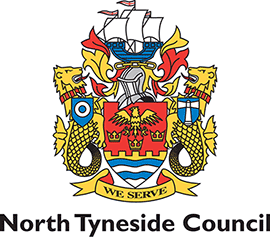Information
-
Project description
-
Contract No. GW
-
Contractor
-
Subcontractors on site
-
Conducted on
-
Prepared by
-
Location
-
Contractor's representative
1.0 Certification and Qualification
-
Workers operating certain types of powered mobile plant without direct supervision must hold appropriate Worksafe certificates of competency. This includes the operation of slewing mobile cranes, non-slewing mobile cranes with greater than 3 tonne capacity, vehicle loading cranes with a capacity of 10 tonnes or more, fork-lift trucks (except pedestrian-operated types), boom-type elevating work platforms with a boom length of 11 metres or more, and truck-mounted concrete placing booms.
-
1.1 Does the Contractor have a copy and a register of certificates, and a review system to ensure all his employees and subcontractors on the site have the appropriate certificates where required?
-
1.2 Has the Contractor checked to see that workers operating earthmoving plant such as front-end loaders, front-end loader/backhoes, skid steer loaders, excavators, dozers and draglines have an appropriate qualification card or certificate and the Contractor has determined employees have the necessary competency?
-
1.3 Contractors must have had operators show them their certificates and qualifications, and have recorded the details on the site register. If no formal certificates are required, does the Contractor have a process to determine employees have the necessary competency to safely operate the plant?
2.0 Training
-
Certificates of competency mean the operator has been assessed as generally competent to operate the classes of plant covered by the certificate. But it does not necessarily mean the operator is familiar with the particular make and model or the particular attachments being used with the plant.
-
2.1 Does the contractors have a system to ensure training in the particular plant and models they are using on site?
-
2.2 Does the contractor have a procedure to makes sure operators are familiar with their machine and attachments, that they have the operator's manual and that they understand the safe operating procedures for the machine and the particular work?
3.0 Asbestos
-
3.1 Does the building or plant contains asbestos, if so the contractor should get a WorkCover-approved asbestos removal contractor to remove and properly dispose of all asbestos-containing material. If Asbestos removal is required what Class Licence does the contractor/subcontractor have? Does the Contractor have any specific restrictions to what they can and can’t do?
-
3.2 Is there a copy of the licence onsite as required by the regulations?
-
3.3 Is the contractor aware of the current OH&S Regulations 2017, in particular ‘Part 4.3 Asbestos’?
-
3.4 Is the Contractor aware of the WorkSafe Compliance Code “Removing asbestos in workplaces” September 2008?
-
3.5 Are the contractor and the employees doing the work, aware of their licence, and familiar with any conditions on it?
-
3.6 Are the employees doing the asbestos removal work trained with the appropriate tickets? Tickets or training records should be available on site.
-
3.7 Where possible, has the Contractor done all asbestos removal work before starting the rest of the demolition.
-
3.8 Has the contractor used WorkCover-approved removalist to remove and dispose of asbestos?
-
Consider completing an ‘Asbestos Removal’ Audit in conjunction with this audit. (COR/05/29538)
4.0 Service Identification
-
4.1 Has the contractor located all electric power lines and cables, gas lines, telecommunication lines and water and sewerage lines?
-
4.2 Contractor to look for septic tanks and underground storage tanks and check their condition. Has this been complied with?
-
4.3 Don't simply rely on the original site plans and drawings. Contractor needs to ensure he takes all reasonable precautions and gets expert help from the known sources such as supply and distribution authorities. Has this been complied with?
5.0 Service Disconnection
-
5.1 Has power and gas been disconnected? Contractor to confirm that pre existing power and gas has been properly disconnected by the distribution authorities.
-
5.2 After this, Contractor to test outlets to double check that all power and gas has been stopped. Has this been complied with?
6.0 Fire Services
-
6.1 Contractor to Keep existing lines and hoses in place for as long as possible. Has this been complied with?
-
6.2 Contractor to provide adequate temporary fire services where necessary. Has this been complied with?
-
6.3 Has the contractor gained advice from the CFA / local fire brigade?
7.0 Demolition Sequence
-
7.1 The sequence in which a building is demolished can be critical to the safety of the workers and the general public. The contractor needs clear plans and needs to communicate them. Is the plan clear and communicated?
-
7.2 Whenever the contractor is in doubt, or whenever they are dealing with unusual structures or structures incorporating pre-stressed concrete reinforced members, they must get expert advice from an experienced demolition rigger or a structural engineer. Has this been complied with?
8.0 Tools and Equipment
-
8.1 Are the compressors, jackhammers and other pneumatic tools are properly maintained and fully serviceable? Petrol or diesel driven compressors or equipment are not to be used in cellars or any badly ventilated areas.
-
8.2 Are all air-hose connections secured with safety pins to prevent dangerous blowouts?<br> petrol or diesel driven compressors or equipment are not to be used in cellars or any badly ventilated areas.
-
8.3 Is concrete cutting equipment the right sort for the tasks? Follow the advice in WorkCover's Guidance Note for Hand-Held Concrete Cutting Equipment.
-
8.4 Is oxy cutting equipment is in good condition, properly secured and close to fire extinguishers?
-
8.5 Are workers using the right personal protective equipment for the tools, such as ear muffs, breathing masks, protective glasses, head shields, gloves, or rawhide boilermaker's jackets to prevent burns?
9.0 Falls
-
9.1 Are all floor or roof penetrations, lift shaft entrances and doorways where staircases are to be removed properly covered or securely barricaded?
-
9.2 Contractor to provide heavy duty scaffolds which are properly constructed with demolition workers never allowed to work unprotected at heights. Has this been complied with?
-
9.3 Where safety harnesses are necessary, are they are serviceable, properly worn and securely fixed to anchorages with a safe load capacity of at least 1.5 tonnes?
-
9.4 Has Contractor made sure inertia reel lines cannot be severed on sharp edges?
10.0 Public
-
10.1 Contractor to review if buildings adjacent or close to public space should have a full-height heavy duty perimeter scaffold to safely contain any debris. Has this been complied with?
-
10.2 Contractor to review if it may need to be sheeted in chain mesh, or shade cloth, or both. Never use hessian because it easily catches fire. Has this been complied with?
-
Where demolition work is being carried out from the scaffold, they may fix ply sheets from the working platform to the guardrail.
Laying old carpet over the platforms and guardrails could help to contain debris on the platform. -
10.3 Where necessary, are there provide properly designed and constructed overhead protective gantries or covered ways over footpaths and laneways.
-
10.4 Is Contractor complying with all requirements of the local municipal Council?
11.0 Rigging
-
11.1 Contractor must have verified that the person in charge of demolition rigging work must have a WorkCover rigging certificate of competency of at least the RI (intermediate) class. Has this been complied with?
-
11.2 Contractors must never allow unqualified and unsupervised workers to use rigging equipment (such as air winches, creeper winches, chain blocks, and cranes) in demolition work. Has this been complied with?
-
11.3 Has Contractor made sure all rigging equipment and slings are in a serviceable condition?
12.0 Suspended Floor Loads
-
12.1 Has Contractor had a structural engineer determine the loading capacity of floors before placing earthmoving equipment, heavy plant or building rubble on them?
-
12.2 Has Contractor determined if floor capacity may need to be increased by back-propping the floors with shoring frames or rigidly connected systems of adjustable building props?
-
12.3 Is the contractor regularly monitoring floor loads and rubble build-up to safeguard from overloading? How?
Additional comments
-
Add additional comments
Action Required
-
Contractor is to review the comments, and consider the recommended actions within this audit. The contractor needs to demonstrate they are complying with their obligations as an employer, what specific remedial action they propose for this site, and if any overall modifications are required to their Health and Safety Plan / safety procedures / supervision. Prompt corrective action is required to eliminate any agreed deficiencies, and any areas of disagreement need to be further explored in writing. All “failed responses” need to be addressed/resolved.
Signatures
-
Gippsland Water responsible officer
-
Auditor
-
Contractor's representative
















